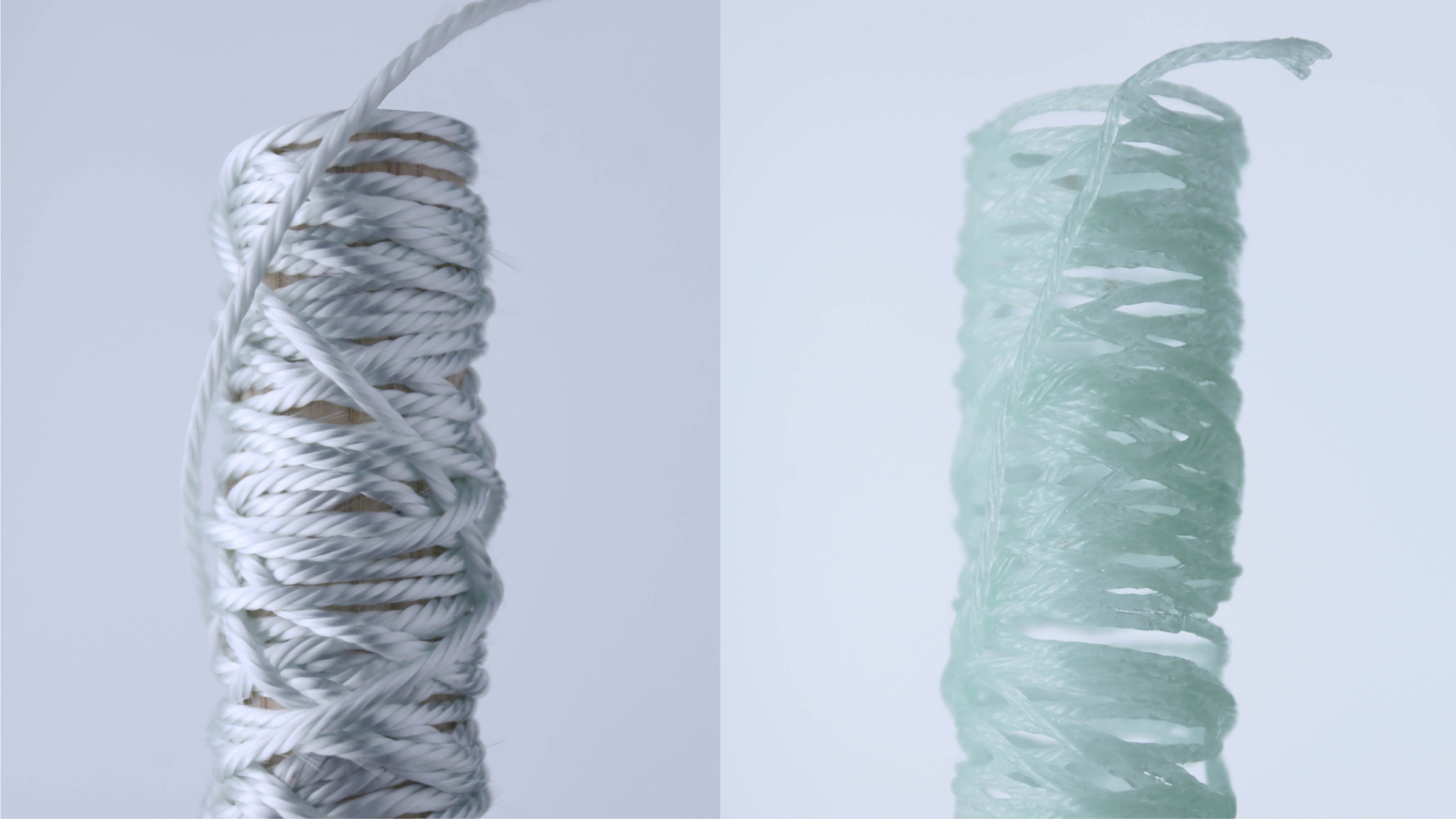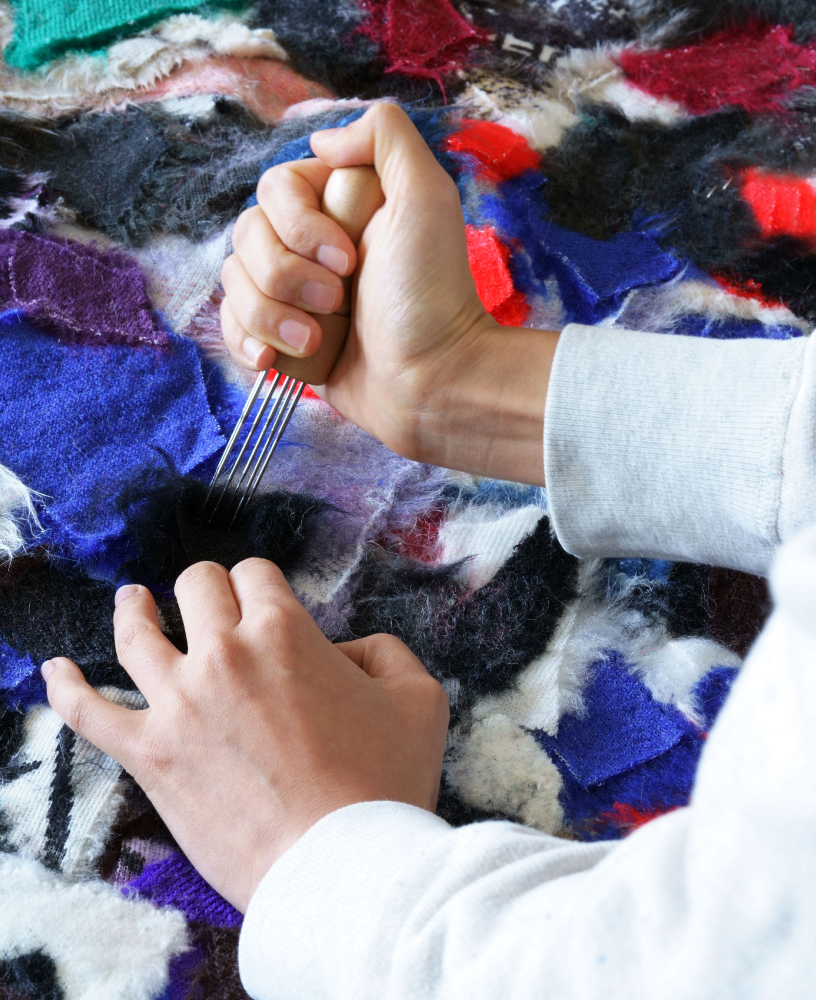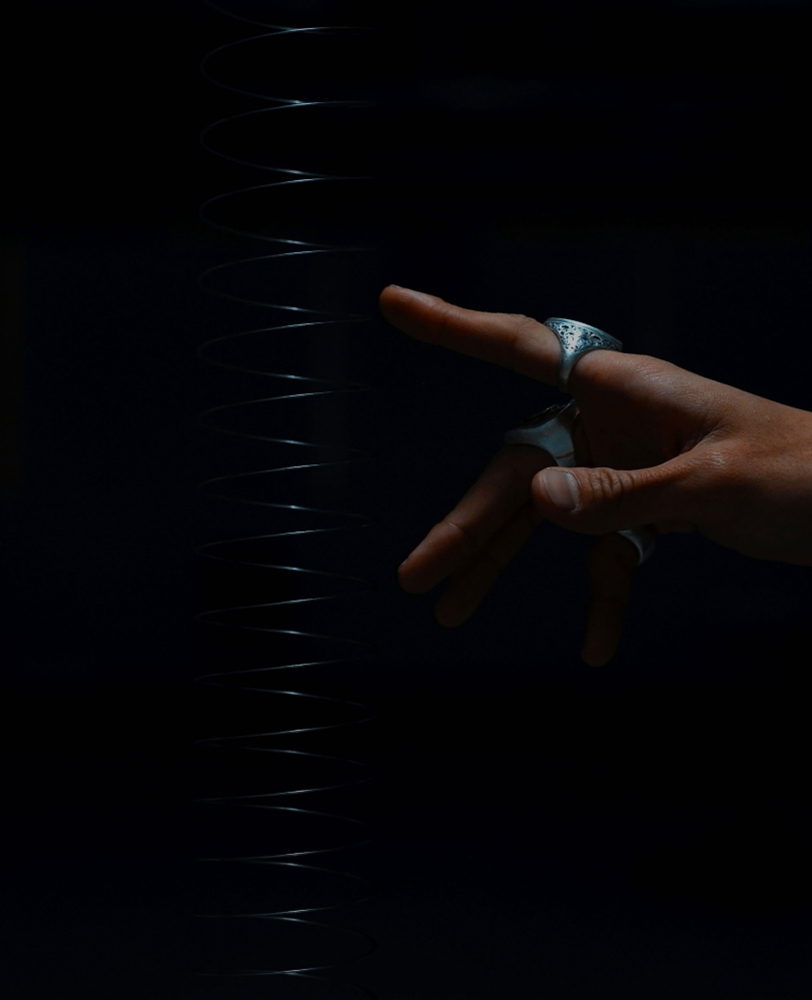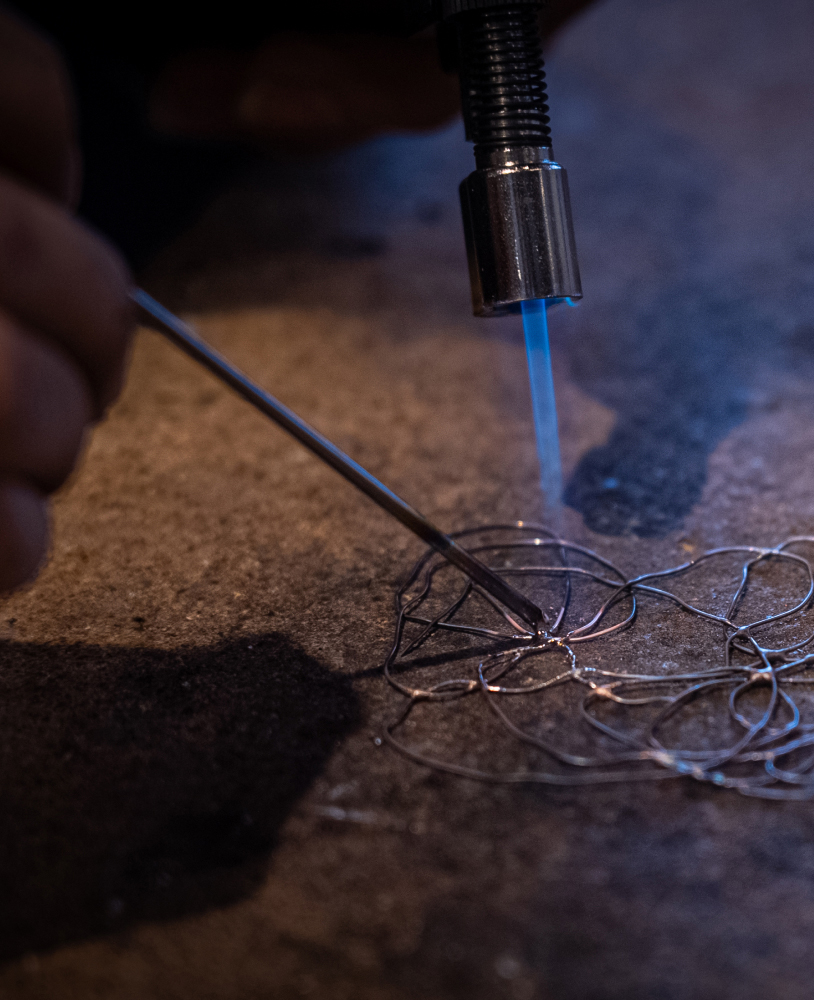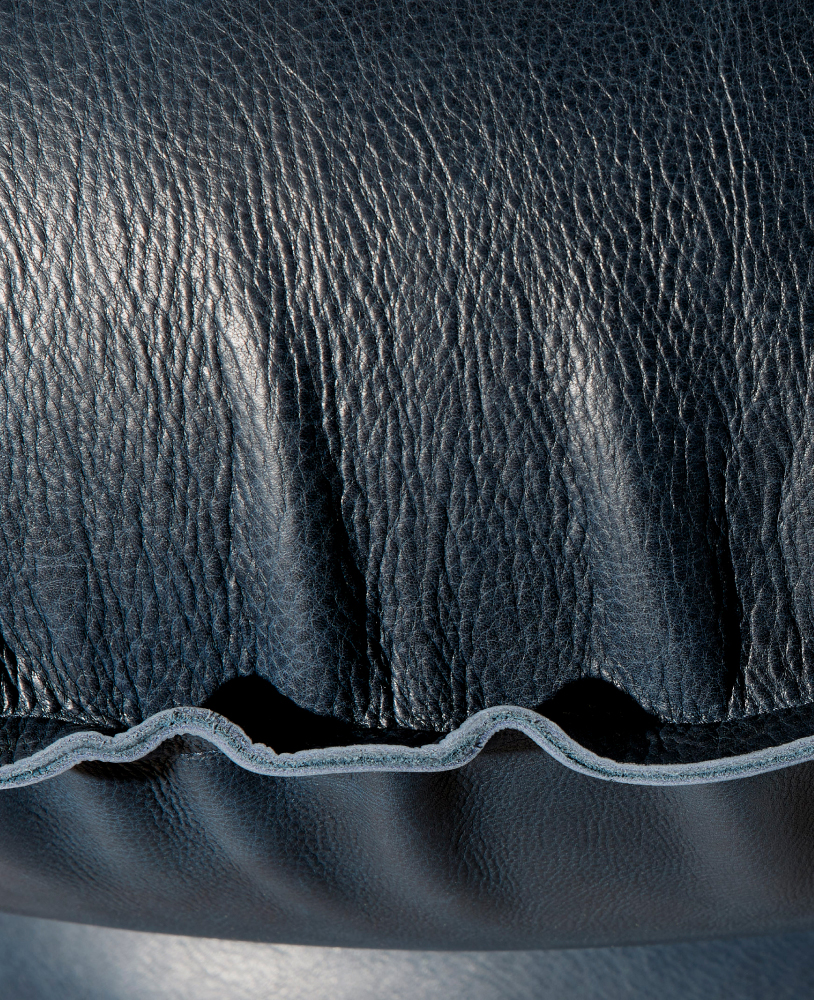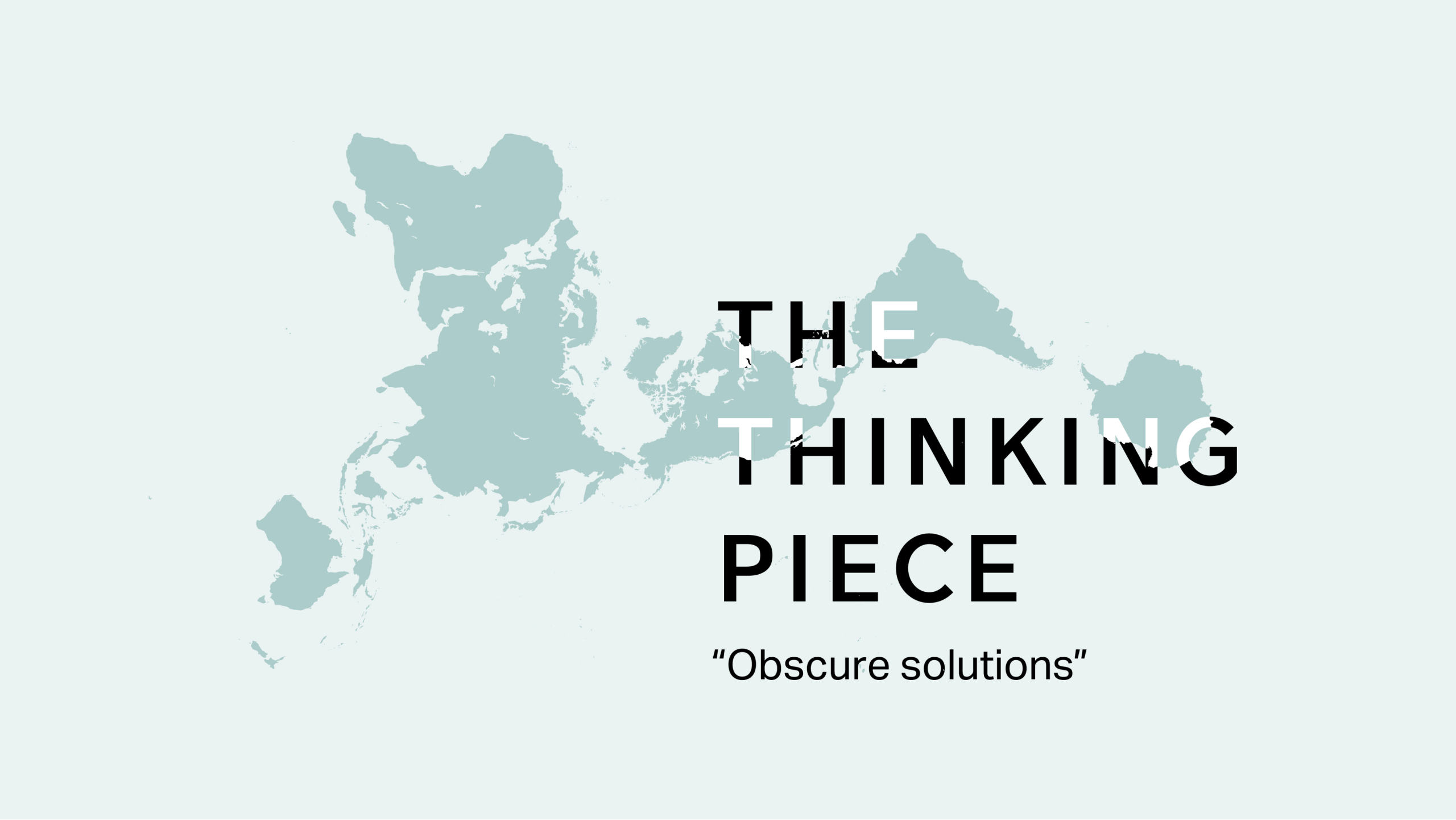
DROPCITY |
17 - 23.04.202310:00-18:00Via Sammartini 48, 20125 Milano
New design contemporaries in Japan
Collective exhibition of emerging Japanese design practices; including we+, TAKT PROJECT, Sae Honda, Satomi Minoshima, and Takuto Ohta. Under the theme ‘Obscure solutions’ for the invisible social issue, the designers represent their own thoughts through their objects to provide a trigger for rethinking the realities of the world we live.
Many of today’s social problems are not easily understood because of the complex interplay of diverse factors. Solutions conceived for one purpose may make the situation worse or create other problems. These problems cause a sense of powerlessness, and the existence of the problem itself tends to be placed outside of people’s awareness. The role of designers in this situation would be to provide more ambiguous solutions (which we will refer to as ‘Obscure solutions’ in this context) to these obscure problems. The five designers participating in this exhibition bring their unique perspectives, offering ‘thinking pieces’ to address challenges like waste disposal, changes in the living environment, visually biased perceptions, the relationship between nature and artifacts, and the difficulties inherent in design.
「The Thinking Piece」の第2回目のエキシビションとして、we+、TAKT PROJECT、本多沙映、簑島さとみ、太田琢人の5組によるグループ展をミラノで開催します。今回は、社会的課題の中でも可視化されにくい事象に対する「Obscure solutions」をテーマに、各自の考察を作品を通じて提示し、世界を再考するきっかけを増やします。
今日の社会問題は、多様な要因が複雑に絡み合い、理解することが容易ではありません。ある目的のための解決策が、さらに状況を悪化させたり、別の問題を引き起こしたりすることもあります。このような問題は、人々に無力感をもたらし、時には問題の存在そのものが意識の外に追いやられてしまいます。こうした状況におけるデザイナーの役割とは、曖昧な問題に対して、より曖昧な解決策(Obscure solutions)を提供することではないでしょうか。本展に参加する5組のデザイナーは、廃棄物処理、生活環境の変化、視覚偏重の認識、自然と人工物の関係、そしてデザイン特有の困難といった課題に対し、それぞれの視点から「考えるための作品」を提示します。
ABOUT
‘The Thinking Piece’ is the non-profit platform from Japan that calls on designers to support diverse social issues and offers them a way of dissemination. Its activities were launched in spring 2022, led by a design journalist Takahiro Tsuchida, Hokuto Ando and Toshiya Hayashi from design studio we+. The title ‘The Thinking Piece’ evokes the concept of ‘a work of art for thinking’.The first exhibition 'The Thinking Piece' was showcased at the gallery (PLACE) by method in Tokyo from 26 April - 1 May 2022. Nineteen designers including we+, TAKT PROJECT, Studio Drift, Kosuke Araki, Rikako Nagashima and Shikai Tseng, exhibited and sold their works to donate the proceeds to humanitarian aid organizations in support to Ukraine. Donations reached 2 million yen.As designers in Japan become more aware of social issues, they have limited options for solving problems like war. By using the skills and networks of the exhibition hosting team, the first exhibition ‘The Thinking Piece’ enabled designers to be active in this context and created an opportunity for many people to think about the issues. It was also a rare opportunity to see the Limited Edition designs together in Japan. In 2022, the organization received the Japanese Social Design Project Award at EDIDA presented by Elle Deco.
「The Thinking Piece」は、多様な社会課題に対してデザイナーに支援を呼びかけ、その発信の場をつくる日本発の非営利のプラットフォームです。デザインスタジオ「we+」の安藤北斗と林登志也、デザインジャーナリストの土田貴宏を中心に、2022年春に活動をスタートしました。「The Thinking Piece」というネーミングに込めた意味合いは「考える(ための)作品」。第1回目の「The Thinking Piece」展は2022年4月に渋谷のギャラリー (PLACE)by methodで開催され、日本の新世代のデザイナーを中心に19組が作品を展示販売しました。展覧会の収益など200万円をウクライナ侵攻に関する人道支援団体に寄付しています。社会問題を意識するデザイナーは日本でも増えていますが、戦争のような問題の解決に対してデザイナーができることは限られています。第1回目の「The Thinking Piece」展は、主催チームのスキルとネットワークを生かすことによって、こうした状況の中でデザイナーが存在感を示すとともに、多くの人々が問題について考えるきっかけをつくりました。また日本ではリミテッドエディションのデザインをまとめて観られる機会が少ないのですが、そのための貴重な場をつくることができました。この活動は、2022年度のEDIDA(ジャパニーズソーシャルデザインプロジェクト部門)を受賞しています。
DESIGNERS
- DESIGNERS
- we+ / TAKT PROJECT / SAE HONDA / SATOMI MINOSHIMA / TAKUTO OHTA
- we+ / TAKT PROJECT / 本多沙映 / 簑島さとみ / 太田 琢人
- CURATOR
- TAKAHIRO TSUCHIDA
- 土田貴宏
we+Urban Origin
Human activities have had geological effects on Earth and are now known as the Anthropocene. Mining has developed worldwide without regard to natural cycles, and manufacturing processes have become very complex. As a result, understanding an overall picture of resource extraction, manufacturing, and disposal is extremely difficult, and people have yet to find a way out of the current situation.
”Urban Origin” is the research project that attempts to reframe the relationship between humans and materials, which has become inadequate and too complex. By considering Tokyo as the origin of used materials including copper wire, styrofoam and debris, the project returns to the starting point of the relationship between humans and materials - "using vernacular materials and treating them simply with our own hands" - and explores completely different values for them.
人間の活動が地球に地質学的なレベルの影響を与え、人新世と呼ばれる現代。世界中で自然循環を無視した採掘が行われ、ものづくりのプロセスは非常に複雑になりました。資源の採掘から製造、廃棄まで、その全貌を解明することは極めて難しく、人々は既存のシステムから抜け出す方法を見出せていません。
「Urban Origin」は、不適切かつ複雑になりすぎてしまった人間と素材の関係の再構築を試みるリサーチプロジェクトです。東京を、銅線や発泡スチロール、瓦礫くずなど使用済み素材の原産地と見立て、「土着の素材を使って、自分たちの手でシンプルに加工する」という、人間と素材の関係の原点に立ち戻り、使用済み素材の全く別の価値を探っています。
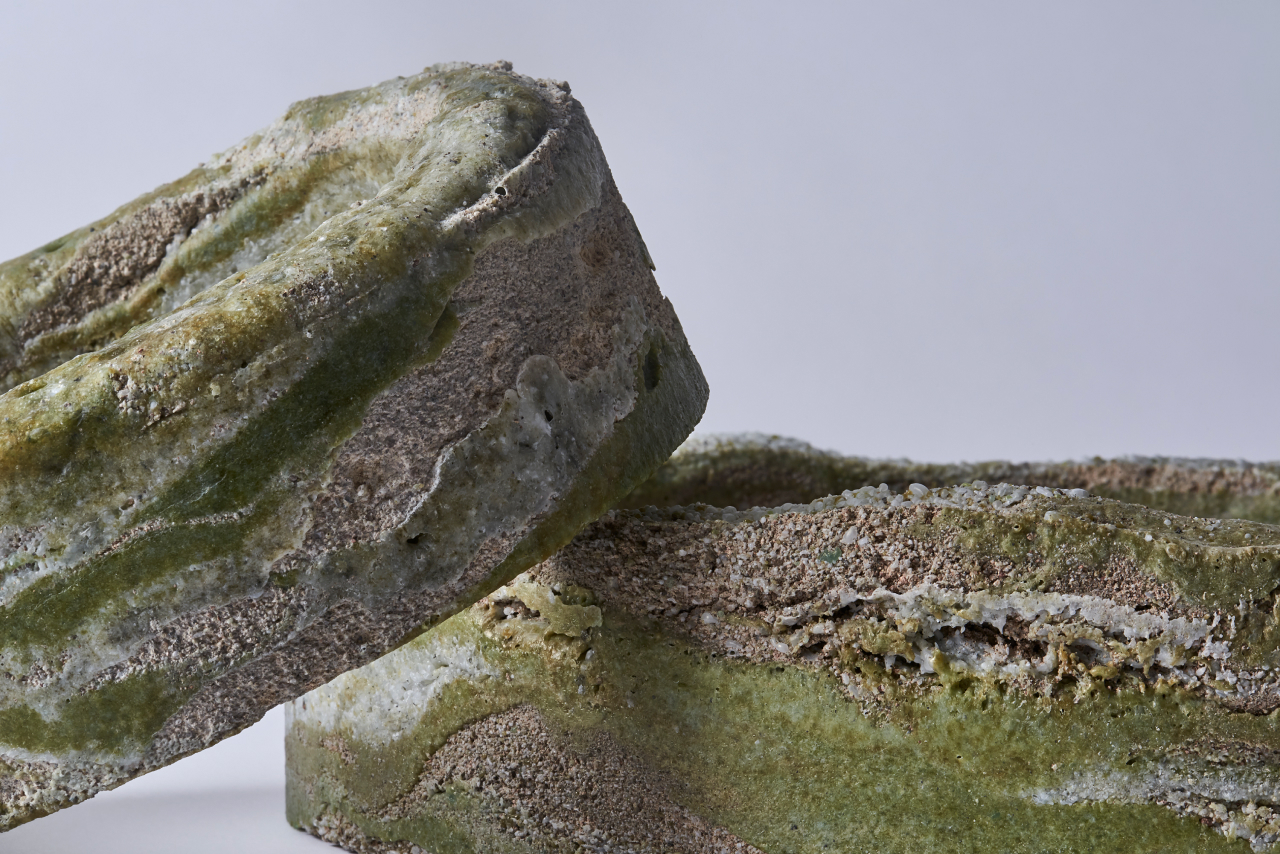
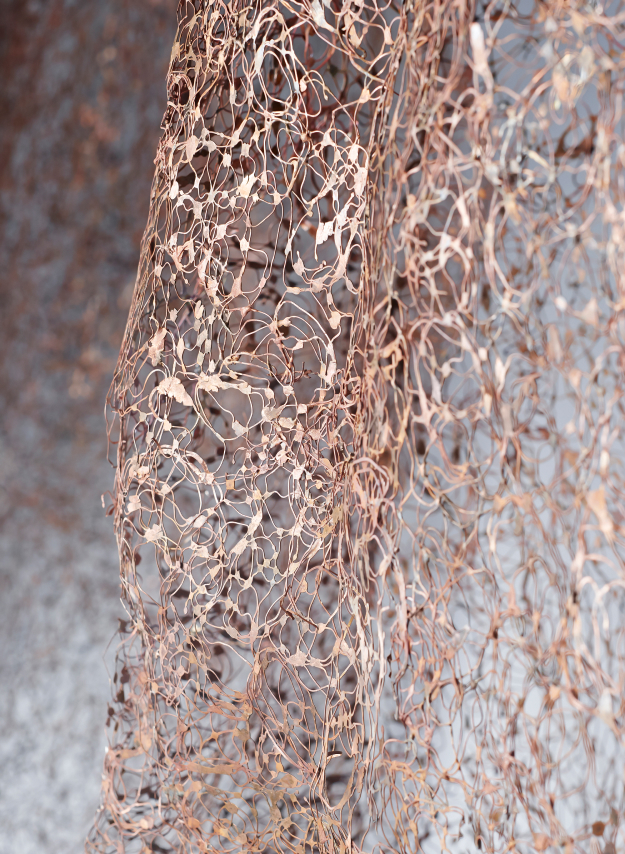
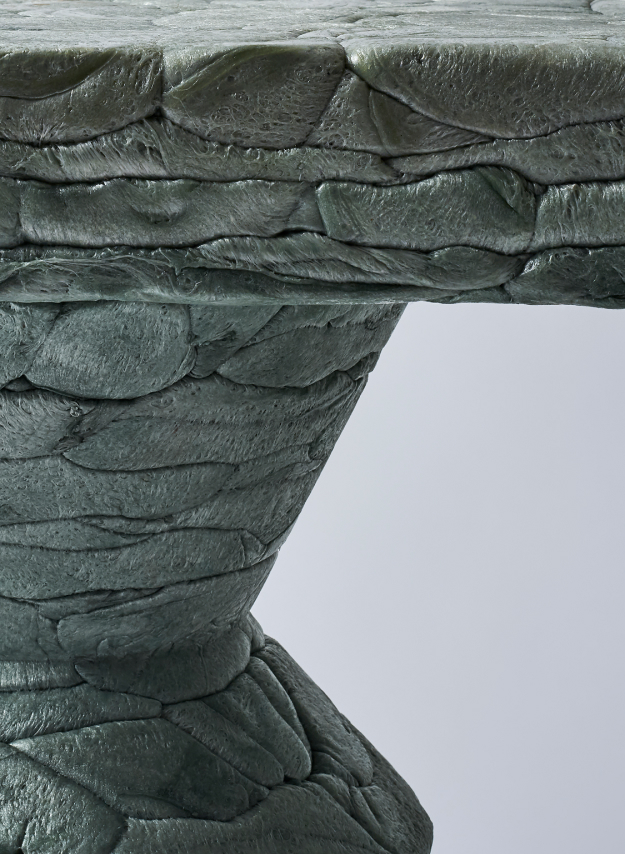
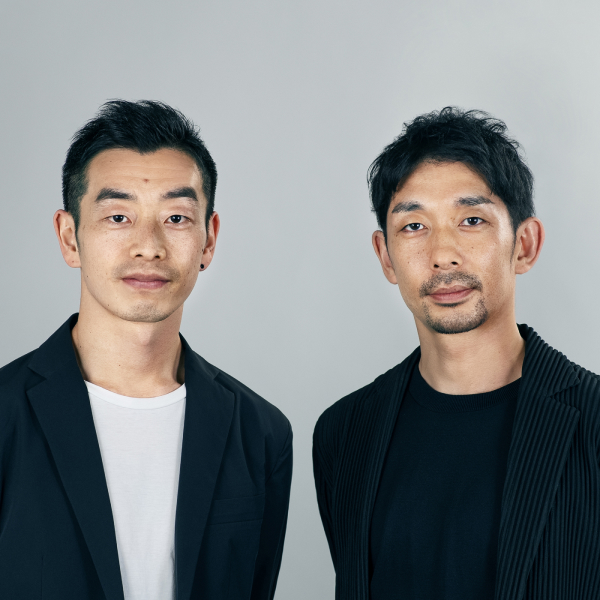
we+
we+ is a contemporary design studio founded in 2013 by Toshiya Hayashi and Hokuto Ando, that gives form to new perspectives and values using methods based on research and experimentation. The studio explores the possibilities of alternative design that establishes a close coexistence with the natural and social environment around us, and incorporates a diversity of values that are often forgotten in today's society, where convenience and rationality are sought. They present self-initiated projects that have emerged from their daily research, both in Japan and abroad. With the knowledge gained from these projects, they participate in a wide range of corporate and organizational projects. Received many awards, including Dezeen Awards 2022 / Emerging Design Studio of the Year Public Vote(UK), Wallpaper* Design Awards 2022 / Best Elements of Surprise(UK), EDIDA 2019 / Young Designer of the Year Nominee(Italy). The work is in the collection of Vitra Design Museum, Germany.
リサーチと実験に立脚した手法で、新たな視点と価値をかたちにするコンテンポラリーデザインスタジオ。林登志也と安藤北斗により2013年に設立。利便性や合理性が求められる現代社会において、見落されがちな多様な価値観を大切にしながら、自然環境や社会環境と親密な共存関係を築くオルタナティブなデザインの可能性を探究しており、日々の研究から生まれた自主プロジェクトを国内外で発表する他、そこから得られた知見を生かし、さまざまな企業や組織のプロジェクトを手がける。Dezeen Awards 2022 / Emerging Design Studio of the Year Public Vote(英)、Wallpaper* Design Awards 2022 / Best Elements of Surprise(英)、EDIDA 2019 / Young Designer of the Year Nominee(伊)等受賞多数。作品はドイツのヴィトラ・デザイン・ミュージアムに永久収蔵されている。
https://weplus.jp/Photo (work) by Masayuki Hayashi
写真 (作品) 林雅之
TAKT PROJECTHomage to SHIRO KURAMATAUnexplainable
Designs solve existing problems.
Designs uncover latent problems and solve them as well.
In today’s world, with social issues piled up, the role of design is gaining even more attention. It defines a problem and provides a solution. It’s a design that is explainable in words. However, that makes us think there is another side of design when looking back at its origin.
Something unforgettable from the moment you see it without knowing why.
Something that grabs your mind and makes you stop.
Such a heart-moving moment cannot be explained immediately. However, it is precisely this experience that cultivates people's minds and continues to deeply influence their actions. And we believe that design has always emphasized the existence of indescribable values. In contemporary society, where social issues are piling up, transparency is increasingly required, and it is extremely important to be explainable in a way that everyone can understand. That is why we must continue to shed light on the unique role of design. We must continue to hold on to it. Ultimately, if there is momentum in society, where something indescribable is not considered important, that should be one of the significant social issues.
This work pays homage to Shiro Kuramata, the pioneer of Japanese contemporary design. His designs always exist beyond languages. They are dreams, phantoms that invite people to the outside of the ordinary and go deeply into their hearts.
“Begin the Beguine” (1985) is a work by Kuramata created to pay homage to Joseph Hoffmann, in which steel rods was wrapped around a chair, and then the chair was burned away, leaving only steel rods. While steel rods is replaced with fiberglass, the act of burning is employed for this work. The string of glass fiber, wrapped around a chair, becomes a phantom of glass in the shape of a shining chair after the whole is burnt.
This is an homage to Kuramata using glass, a material that symbolizes him.
Through this work, we would like to reconsider social issues and the underlying value of design.
TAKT PROJECTHomage to SHIRO KURAMATA説明ができないこと
顕在化した問題を解決するデザイン。
潜在化した問題を掘り起こし、同じくその問題を解決するデザイン。
社会課題が山積する現代において、そんなデザインの役割に一層の注目が集まっている。 問題を定義し、解決方法を示す──。つまりそれは、言語的に「説明が可能」なデザインである。しかしそんな状況だからこそ、デザインの根源に立ち返って考えてみたい。
自分でもわからないが、見た瞬間から、忘れることが出来ない何か──。
ただただ心を奪われ、立ち止まってしまう何か──。
そんな心が動く瞬間は、すぐには「説明ができない」。しかし、それこそが人の心を耕し、深く行動に影響を与え続けるのではないだろうか。そしてそんな言語化できない価値の存在を、デザインは訴え続けてきたのではないだろうか。社会課題が山積した現代社会において、ますます透明性が求められ、誰もが納得できる「説明可能」な事が、極めて重要になっている。だからこそ、デザインが持つその特異な役割に、光を当て続けなければならない。持ち続けなければならない。つまり、言語的に「説明ができないこと」が重要視されない社会の機運があるのならば、それこそが大きな社会課題の一つであるはずだ。
この作品は、日本のコンテポラリーデザインの祖ともいえる、倉俣史朗さんへのオマージュである。 氏のデザインは、常に言語を超えたところに存在している。夢であり、幻影であり、日常の外側へと誘い、人の心に深く入り込む──。
ヨゼフ・ホフマンの椅子にスチール平棒をまきつけ、椅子ごと焼き尽くし、スチール平棒だけが残った氏の作品「Begin the Beguine(1985年)」。この作品の素材であるスチール平棒をガラス繊維に変え、「焼く」という行為を引用した。椅子に巻きつけたヒモ状のガラス繊維は、椅子ごと焼き尽くすことで、輝く椅子の形をしたガラスの幻影となる。
倉俣史朗さんを象徴する素材でもあるガラスを使ったオマージュ作品である。
この作品を通して、社会課題とデザインの根底にある価値を再考したい。
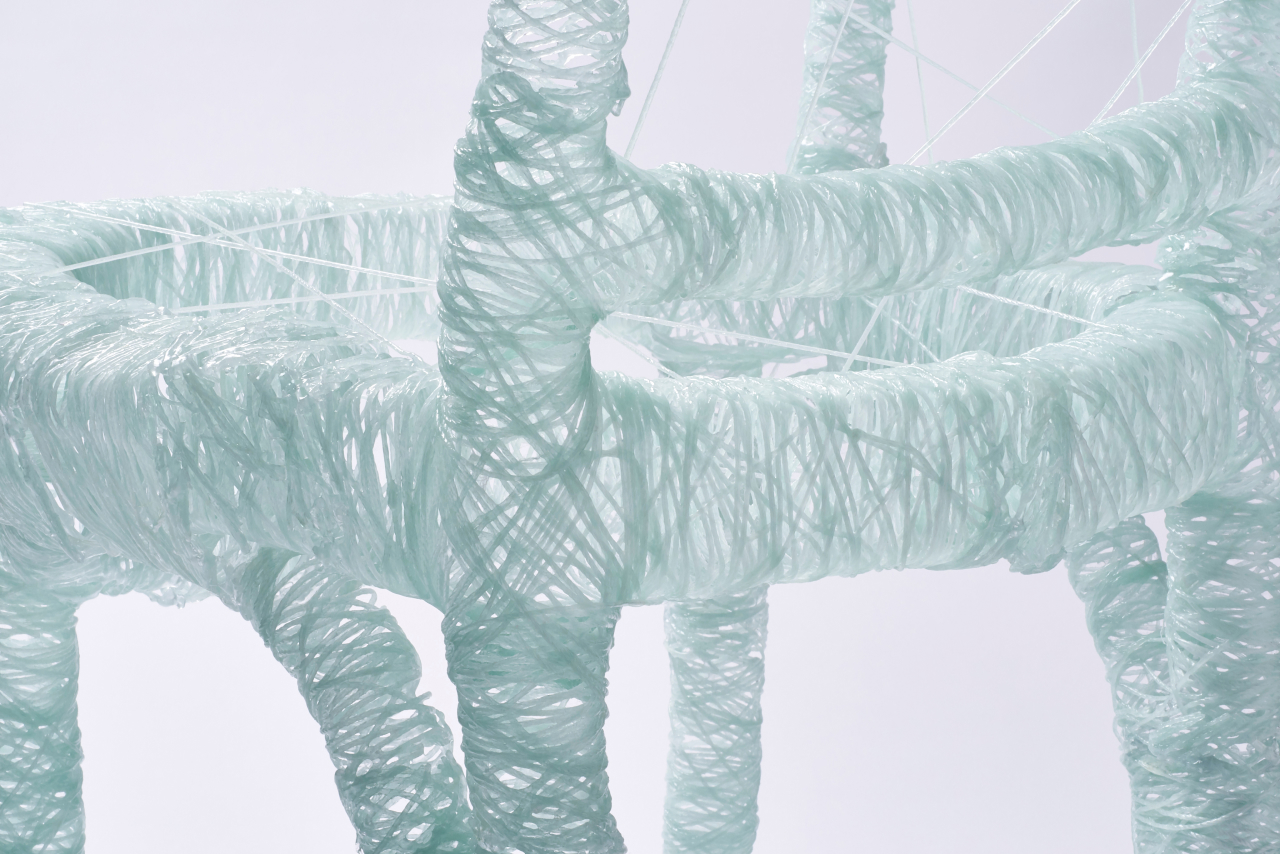
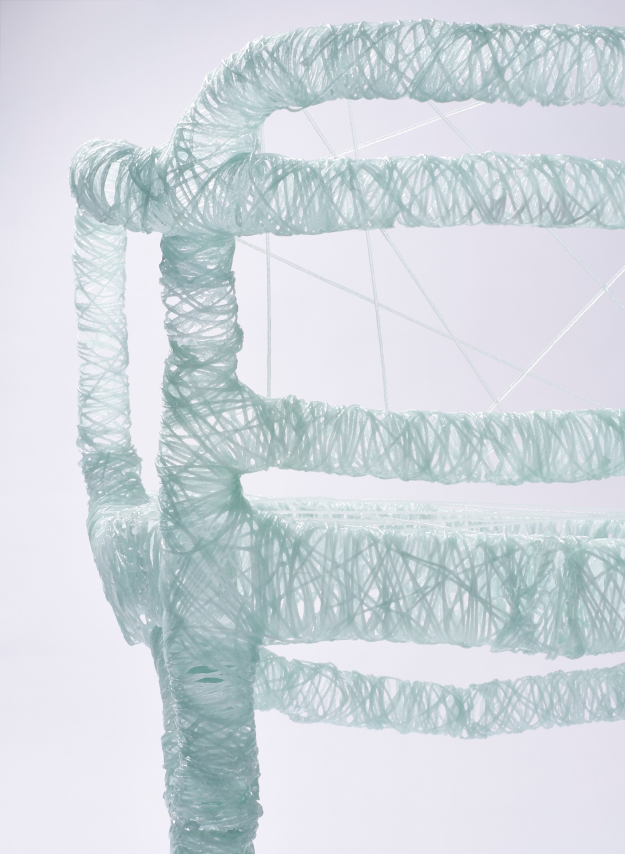
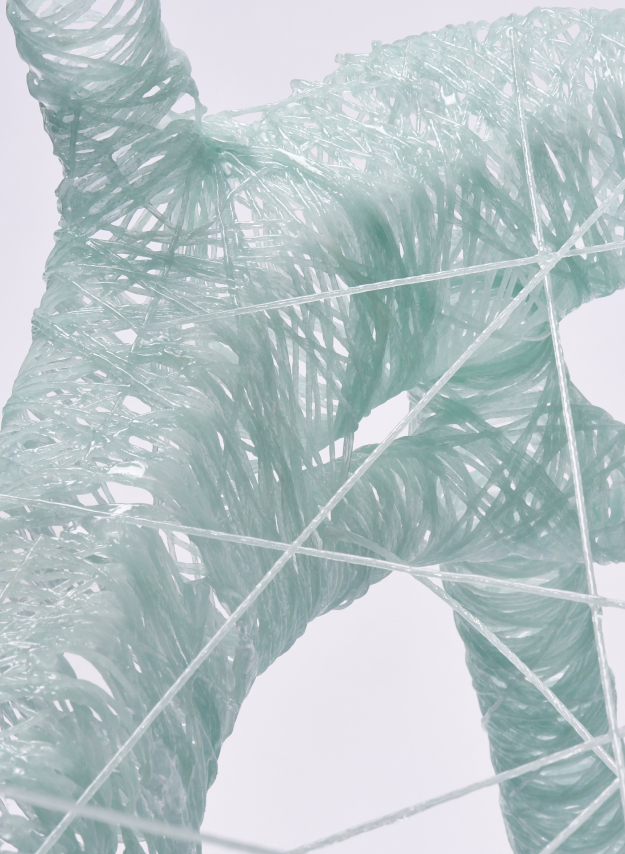
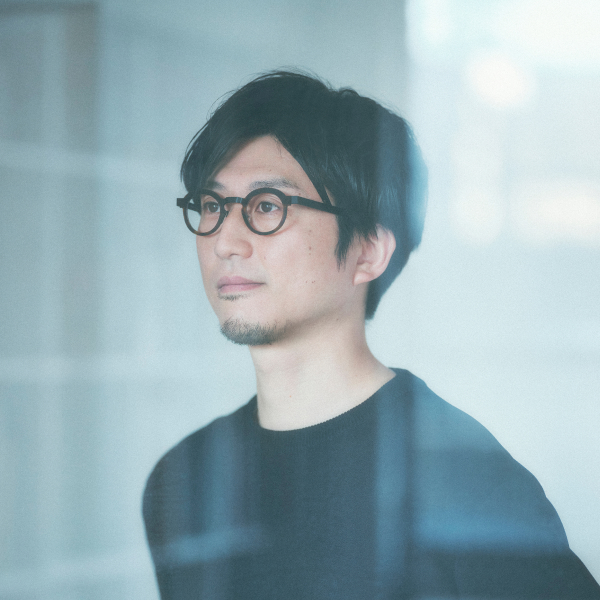
TAKT PROJECT
Established in 2013, TAKT PROJECT is a design studio based in Tokyo and Sendai, led by Satoshi Yoshiizumi. The studio has been carrying out self-driven research projects —to destabilize existing frameworks— and the results have been mostly invited and often presented independently to museums as well as design exhibitions both domestically and internationally, including Milan Design Week, Design Miami/, Museum of Decorative Arts Paris (Musée des Arts Décoratifs), and the M+ museum in Hong Kong, 21_21 DESIGN SIGHT in Tokyo. Based on the research results, the studio realizes diverse projects to create ‘envisioned possibilities’ in collaboration with various clients.
Received many domestic and international awards, including DesignMiami/ Swarovski Designers of the Future Award 2017(Switzerland), Dezeen Awards(UK) Emerging Designers of the year 2019, FRAME AWARDS 2022(Nederland). Also, Their three works have been collected in Hong Kong M+.
吉泉聡を代表に2013年設立。東京と仙台に拠点を構えるデザインスタジオ。既存の枠組みを揺さぶる実験的な自主研究プロジェクトを行い、その成果をミラノデザインウィーク、デザインマイアミ、パリ装飾美術館、香港M+、21_21 DESIGN SIGHT、京都市京セラ美術館など、国内外の美術館やデザインの展覧会で発表・招聘展示。その研究成果を起点に、様々なクライアントと「別の可能性をつくる」多様なプロジェクトを具現化している。
世界で最も影響力のある建築・デザインメディアの1つDezeen(イギリス)が主催するアワードDezeen Awards 2019にて「Emerging Designers of the year」に選出。また、国際的なデザインフォーラムDesign Miami/ Basel(スイス)が、毎年世界の3組のデザイナーに送るアワード「DesignMiami/ Swarovski Designers of the Future Award 2017」に選出など、国内外のデザイン賞を多数受賞している。
3つの作品が、香港の美術館M+に永久収蔵されている。
Photo (Portrait) by Tsujii Shotaro
Photo (work) by Masayuki Hayashi
写真 (ポートレート) 辻井祥太郎
写真 (作品) 林雅之
SAE HONDACryptid
Artificial faux materials generally tend to be worth less than the real ones, but faux fur calls for a renewed focus on its value from an animal welfare perspective. However the problem has to do with the fact that most faux fur is made from synthetic fibres derived from petroleum. This project started with field research into the production of faux fur, a material with such complex aspects.
The field research took place in the town of Koyaguchi, Japan, one of the world's largest faux fur producers. The production process of faux fur in Koyaguchi is said to involve about 70 steps and is filled with a lot of craftsmanship. Witnessing this craft makes you feel the pure and precious relationship with nature in human manufacturing.
Inspired by the wide variety of colours, patterns and textures of real animal fur, humans have celebrated the beauty of nature through their reproduction. Such a valuable relationship with nature in human manufacturing should not become synonymous with a negative aspect of mass consumption.
”Cryptid” is a new form of fur crafted with this in mind. Using the felting technique, the faux fur scraps discarded by manufacturers and sewing factories are assembled by hand, one by one, without sewing, but letting the furs intertwined.
人工のフェイク素材は一般的に本物よりも価値が下がる傾向がありますが、フェイクファーは動物愛護の観点からその価値が再注目されています。その一方でフェイクファーのほとんどは石油由来の化学繊維で作られているという事実もあります。このプロジェクトはそんな複雑な側面をもったフェイクファーという素材の製造現場のフィールドリサーチからスタートしました。
和歌山県高野口という町は世界有数のフェイクファーの産地で、そのクオリティの高さに定評があります。高野口のフェイクファーの製造工程は約70工程にも及ぶと言われ、多くの職人技が詰まっています。そのクラフトマンシップを目の当たりにすると、人間のものづくりにおける純粋で尊い自然との関わりを感じます。
動物の毛皮の多種多様な色彩と模様、手触りにインスピレーションを受けながら、その再現を通して自然の産物の美しさを祝福する。そんな人間のものづくりにおける価値ある自然との関わりを、大量消費という文化の中でネガティブなものへと転化させてしまわないように。「Cryptid」はそんな思いからつくられた新しい形の毛皮です。メーカーや縫製工場で廃棄されるフェイクファーのはぎれをフェルティング技術を応用し、毛を絡ませながら縫製をせずにひとつひとつ手作業で繋ぎ合わせています。
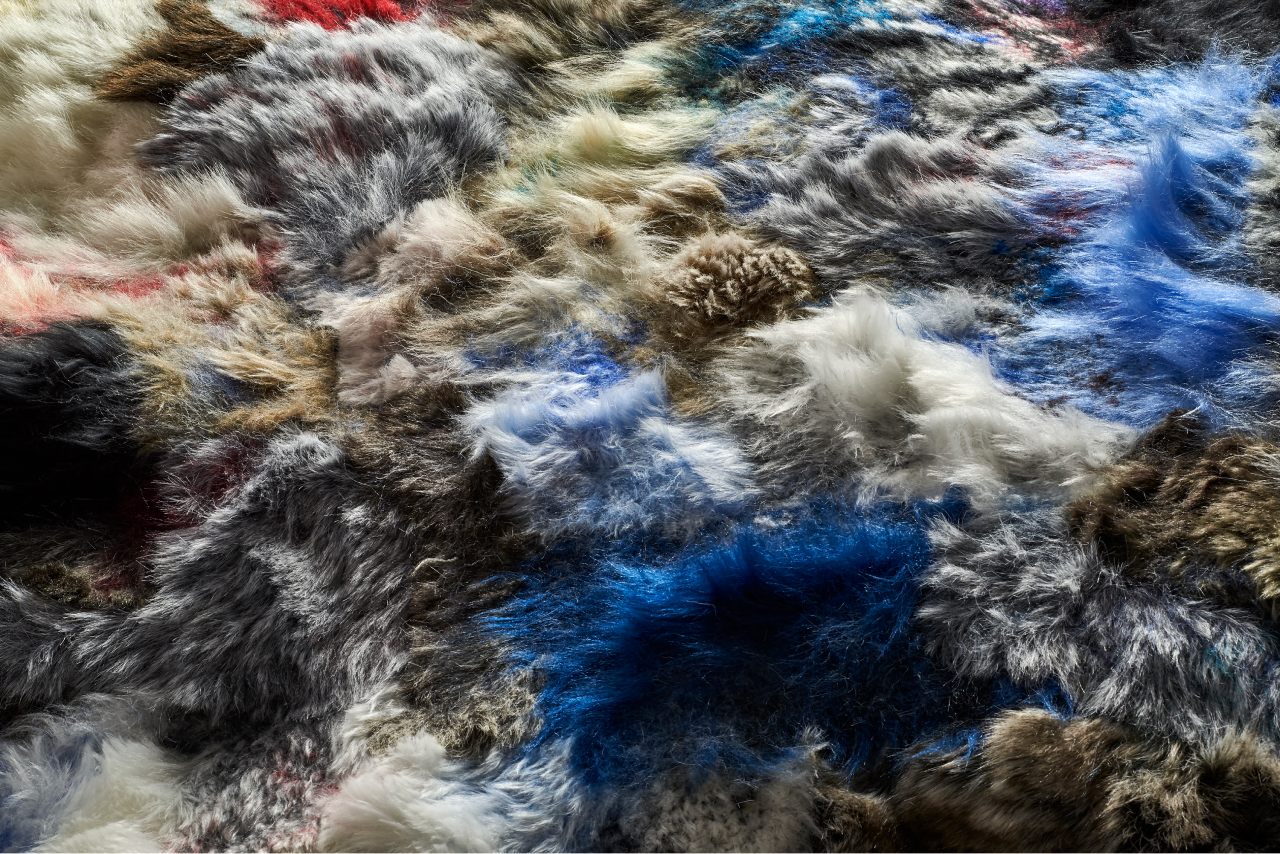
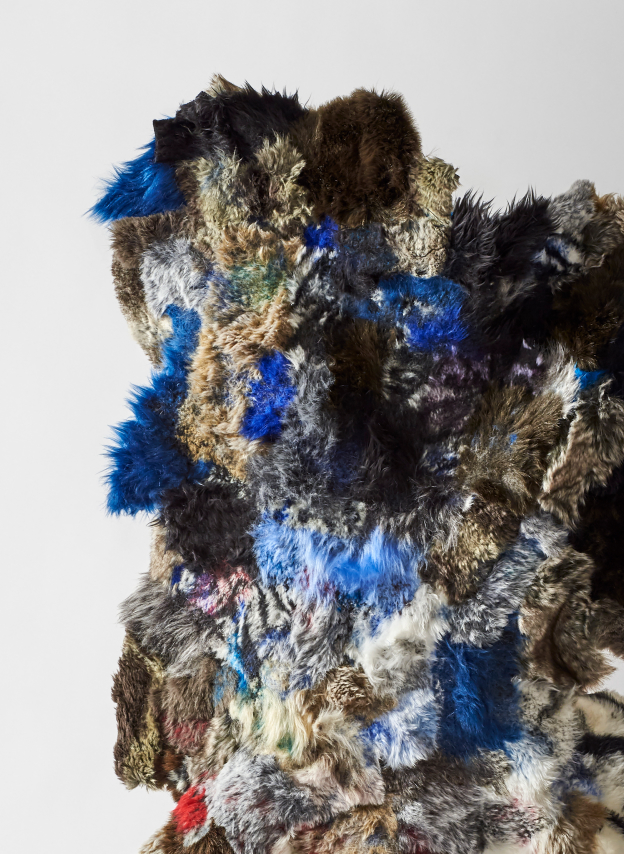
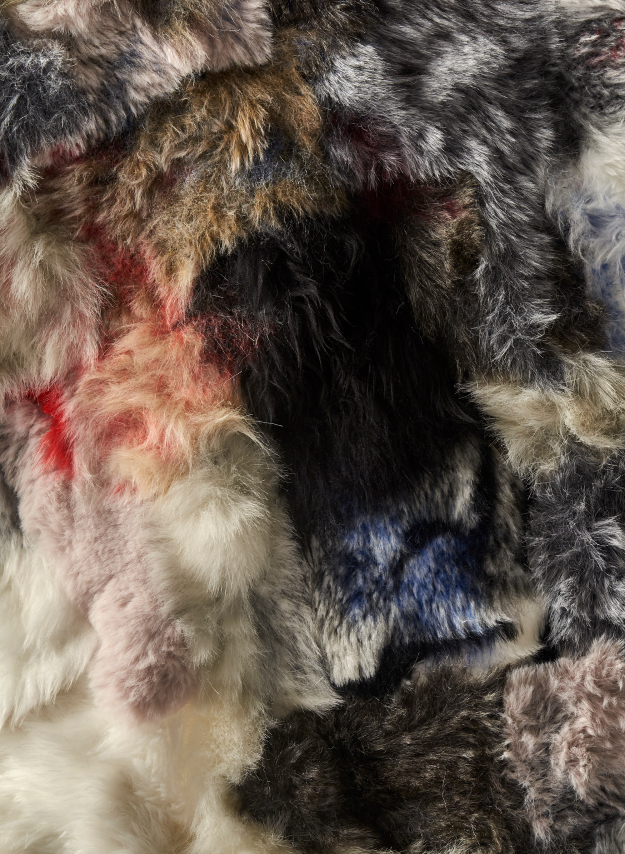
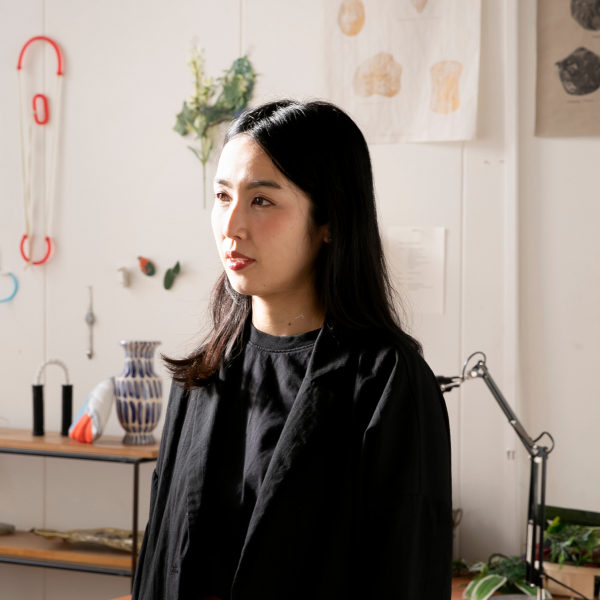
SAE HONDA
Sae Honda is a Japanese designer / jewellery artist based in Japan. She graduated from Musashino Art University in Tokyo in 2010, and later studied at Gerrit Rietveld Academie from 2013 to 2016. After completing her studies, she has been internationally showcasing self-initiated works as well as commissioned work. Questioning the existing value system with her poetic approach, she explores alternative aesthetics this modern life has to offer. Through her practice she formulates fresh perspectives and values, a result of careful observation of the current world where the border between nature and artifact is becoming more and more obscure. Some of her works are included in the permanent collection of Stedelijk Museum Amsterdam, Rijksmuseum Amsterdam and Museum Arnhem.
デザイナー/ジュエリーアーティスト。2010 年に武蔵野美術大学工芸工業デザイン学科を卒業後、2013 年からアムステルダムのヘリット・リートフェルト・アカデミーのジュエリー学科で学び、2016 年に卒業。2021年より日本に拠点を移し、国内外で作品を発表するほか、コミッションワークも手がけている。
既存の価値体系に詩的なアプローチでゆるやかに疑問をなげかけながら、オルタナティブな美意識を探究。自然と人工物の境界線が曖昧になりつつあるこの世界を俯瞰で見つめながら、新しい価値をかたちにしている。
作品はアムステルダム市立美術館、アムステルダム国立美術館、アーネム博物館に永久所蔵されている。
Photo (work) by Masayuki Hayashi
写真 (作品) 林雅之
SATOMI MINOSHIMAInflatable Leather
With the evolution of technology, the lifestyle of modern people has become “nomadized”. As people constantly move between cities, products need to be thinner, lighter, and smaller. Our living spaces reflect the same trend. Rresidential spaces in densely populated urban areas are becoming smaller, and there is a constant flux of tenants. How can we move around lightly with a lot of belongings in this nomadic society?
Inflatable products that can be adjusted in volume might be a solution for this problem, but in many cases, they are used for short-term, ad hoc purposes. Research was therefore done to create an inflatable product that can be kept in use for a long time.
“Inflatable Leather” is a series of inflatable stools.
The inner rubber tubes are covered with genuine leather. A light, flexible, and inflatable material and natural leather with a long life and rich texture—when combined, these two different materials complement each other. And the leather is expected to become even more attractive over time.
テクノロジーの進化に伴い、「ノマド化」する現代人のライフスタイル。人々が都市間の移動を繰り返す中で、プロダクトはますます薄く、軽く、コンパクトであることが求められています。それはモノだけでなく、私たちの居住空間も同様です。人口が集中する都市部の住居はどんどん狭くなり、入居者はつぎつぎと入れ替わります。このノマディックな社会の中で、私たちはどうすれば多くの持ち物を抱えながら、軽やかに移動することができるでしょうか?
空気の出し入れでモノのボリュームを自由自在に調節できるインフレータブルは、この問題の解決策になり得ます。しかし、多くの場合、それらはその場しのぎの短期的な目的で使用されています。そこで、長く手元において使い続けたくなるようなインフレータブルのあり方をリサーチしました。
「Inflatable Leather」は空気で膨らませる革製スツールシリーズです。
内側のゴムチューブは、本革でカバーされています。軽くてしなやかで膨らむ素材と、寿命が長く、風合い豊かな天然皮革――2つの異なる性質の組み合わせが、互いの価値を引き立てます。そして、革は時間の経過とともに風合いが増していきます。
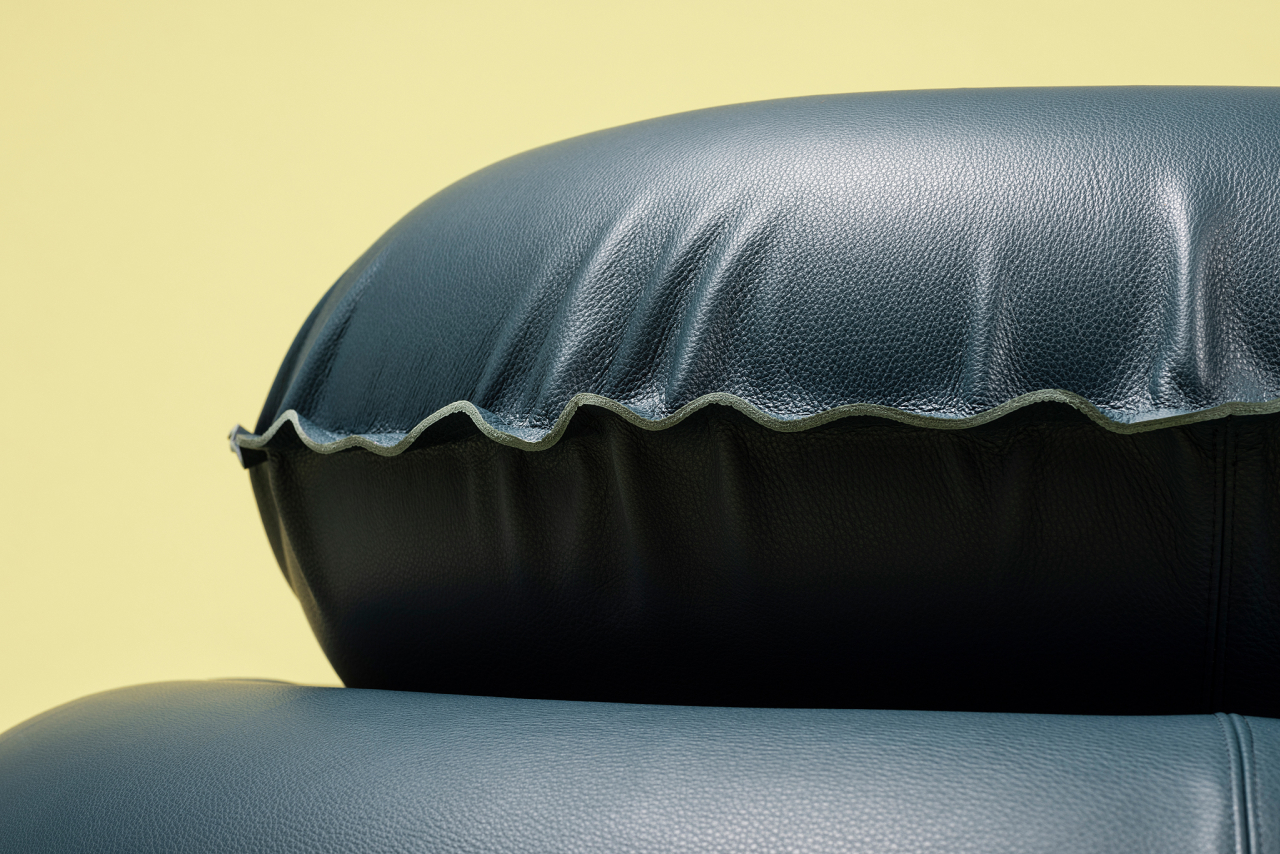
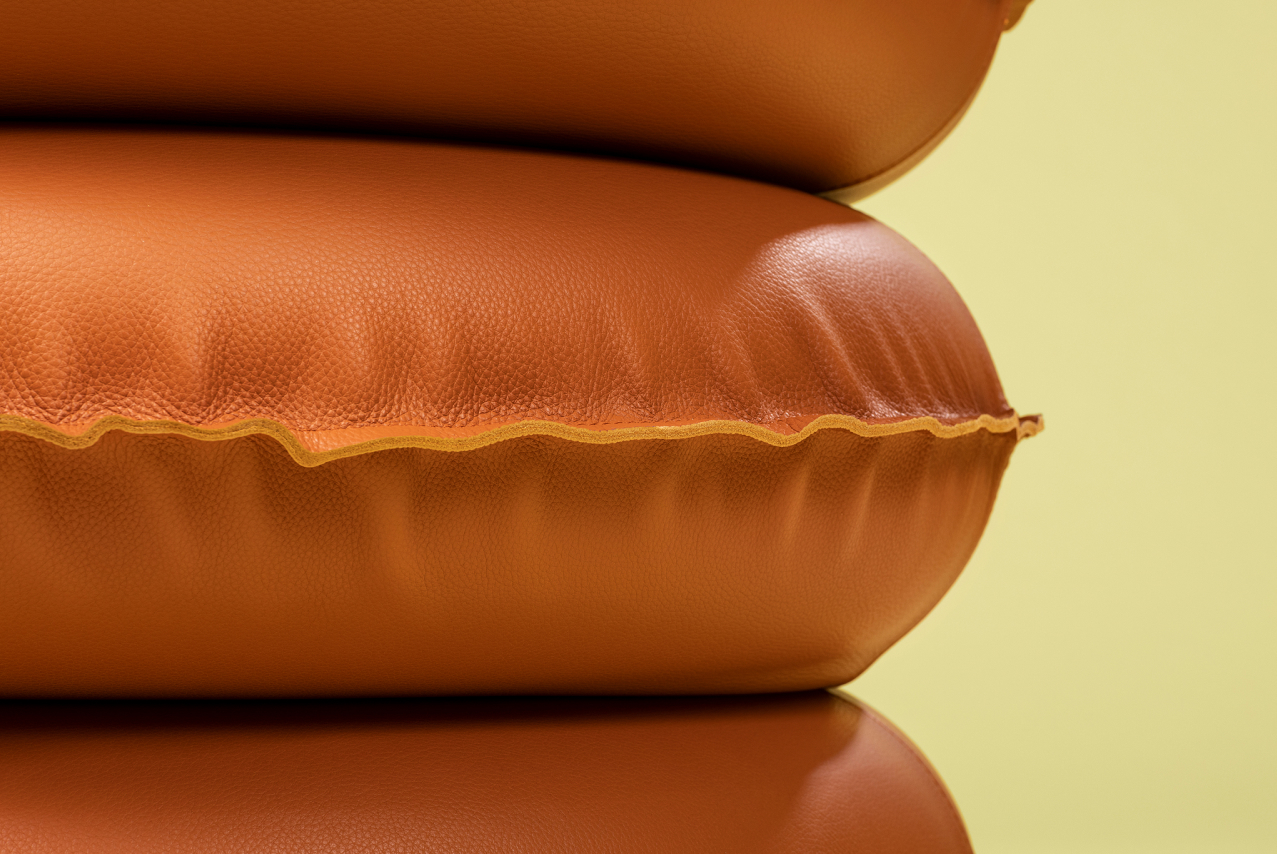
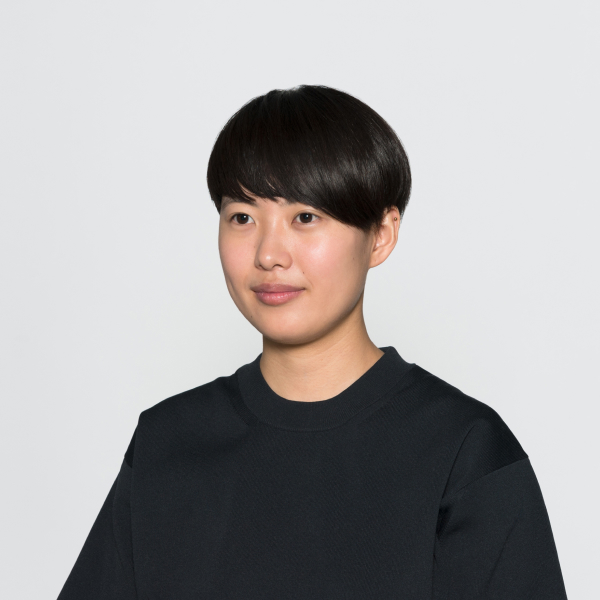
SATOMI MINOSHIMA
Satomi Minoshima is a Japanese designer driven by a passion for exploring the possibilities of different materials and colors. She seeks to understand the singular context surrounding specific colors and materials leading to a new interpretation and perspective of their creation process. By always honoring the tangibility of the object, Minoshima’s design approach combines material-based research and a genuine and poetic narrative to bring her concepts to life.
She holds degrees from Musashino Art University in Tokyo (2014) and Design Academy Eindhoven (2019) and has exhibited her work internationally. Currently based in the Netherlands, she was recently recognized with Raising Talent Awards Japan from Maison & Objet in 2022.
異なる素材や色の可能性を探求するデザイナー。素材や色に関する背景や文脈を理解し、新しい解釈につなげることを目指している。物が持つ手触りや質感を重視した素材リサーチと詩的なストーリーを組み合わせて、コンセプトを可視化する。
武蔵野美術大学基礎デザイン学科(2014年)、オランダのデザインアカデミーアイントホーフェン(2019年)を卒業。現在はオランダを拠点にに置き、ヨーロッパを中心に国内外で作品を発表している。2022年にはメゾンエオブジェ Raising Talent Awards Japanを受賞。
Photo (work) by Barbara Medo
写真 (作品) Barbara Medo
TAKUTO OHTAAfterglow
Close your eyes in your room. Then you suddenly lose the sense of existence of many things around you. Excluding memories and experiences, I was able to confirm the existence of the body, the clothes I was wearing, the chair I was sitting on, the floor, the sound of the clock hands, the ventilation fan in the kitchen, the outdoor unit outside, and the voices of passers-by. It was a texture that is usually unconsciously perceived by the sense of touch or hearing. While visual information simply slides and spreads across the surface, auditory and tactile senses allow us to perceive temporal depth and material depth. However, the connection with other things that exist in the space but have not yet touched the sense of touch or hearing remains difficult, and I feel resentment at the clumsiness and distance of the clues. In the first place, aren't objects created on the premise that they exist with a sense of sight? I would like to think more deeply about the relationship between objects and humans through sound.
Humans are constantly hearing sounds. Visual information stoped for about 1/3 of the day due to sleep, but the ears are constantly paying attention to their surroundings. In addition, the range of recognition is wide, and it is possible to process detailed information at the same time. It can be understood from the fact that the conductor of an orchestra feels uncomfortable with just one note among dozens of instruments. We make and hear various sounds in our daily life. The sound of the washing machine, the sound of running water, the sound of opening a window, the sound of folding clothes. Sounds expressed in the actions of machines and humans are part of life. I decided to focus on some sounds. The sound after flushing the toilet, the fluorescent light that takes a while to turn on when you press the switch, the sound of the front door closing. What these three sounds have in common is that the reverberations of human actions remain in the space for a while as sounds. For example, when you place a glass in your hand on a desk, the sound of glass and wood colliding accurately expresses the action, but it is too ephemeral. I thought that if objects that intentionally leave the afterglow of interacting with them are taken into our lives, changes will occur in the substance and sensations that we feel when we look at them.
Afterglow is a device that uses behavior and nature to generate sound, like a wind chime, with the time and space characteristics of sound. Using the properties of metal, it sounds a little different from the image you have of things. This time, using sounds with two types of nature, it will be a work that makes you feel the afterglow of things.
部屋で目を閉じる。すると身の回りにある数多のモノの存在を途端に感じなくなる。記憶や経験を除いて存在を確認できたのは身体・身に着けている衣類・座っている椅子・床・時計の針の音・台所の換気扇・外の室外機・通行人の話し声のような触覚もしくは聴覚が普段無意識に知覚している質感だった。視覚情報が表面をひたすらに滑り広がっていくのに対し、聴覚や触覚には時間的奥行きや物質的奥行きを感じることができる。ただ、空間に存在するものの未だ触覚や聴覚に触れない他のモノとの接続は果たされないままであり、その手がかりの拙さと遠さに憤りを感じる。そもそもモノは視覚を伴いながら存在することが前提で制作されていないだろうか。聴覚を通じモノと人間の関係についてより深く考えてみたい。
人間は音を常に聞き続けている。視覚情報は睡眠によって一日の約1/3は休むが、耳は常に周りに気を配っている。また認識の範囲も広く、細かな情報を同時に処理することも可能である。オーケストラの指揮者が数十台の楽器の中でたった1つの音に違和感を感じられることからも分かるだろう。私たちは生活の中で多様な音を発し耳にしている。洗濯機の音、水の流れる音、窓を開ける音、服をたたむ音。機械や人間の行動の中で発現した音は生活を構成する一部である。私はいくつかの音に注目することにした。トイレを流した後の音、スイッチを押すとしばらく時間がかかりながら付く蛍光灯、玄関のドアが閉まる音。この3つの音に共通するのは人間の行動の余韻が音としてしばらく空間に残ることにある。例えば手に持っているコップを机に置いた時に出るガラスと木のぶつかる音は行為を正しく表現しているがあまりにも刹那的である。もし、モノと関わったことの余韻が意図的に残るオブジェクトが生活に取り込まれたとしたら、モノを見た時に感じる内実や感覚に変化が生まれると考えた。
Afterglowは音の持つ時間や空間的特性のある、風鈴のように行動や自然を利用し音を発生させる装置である。金属の性質を利用しモノに抱くイメージとは少し異なる音が鳴る。2種類の性質の音を今回使い、モノの余韻を感じさせる作品となる。
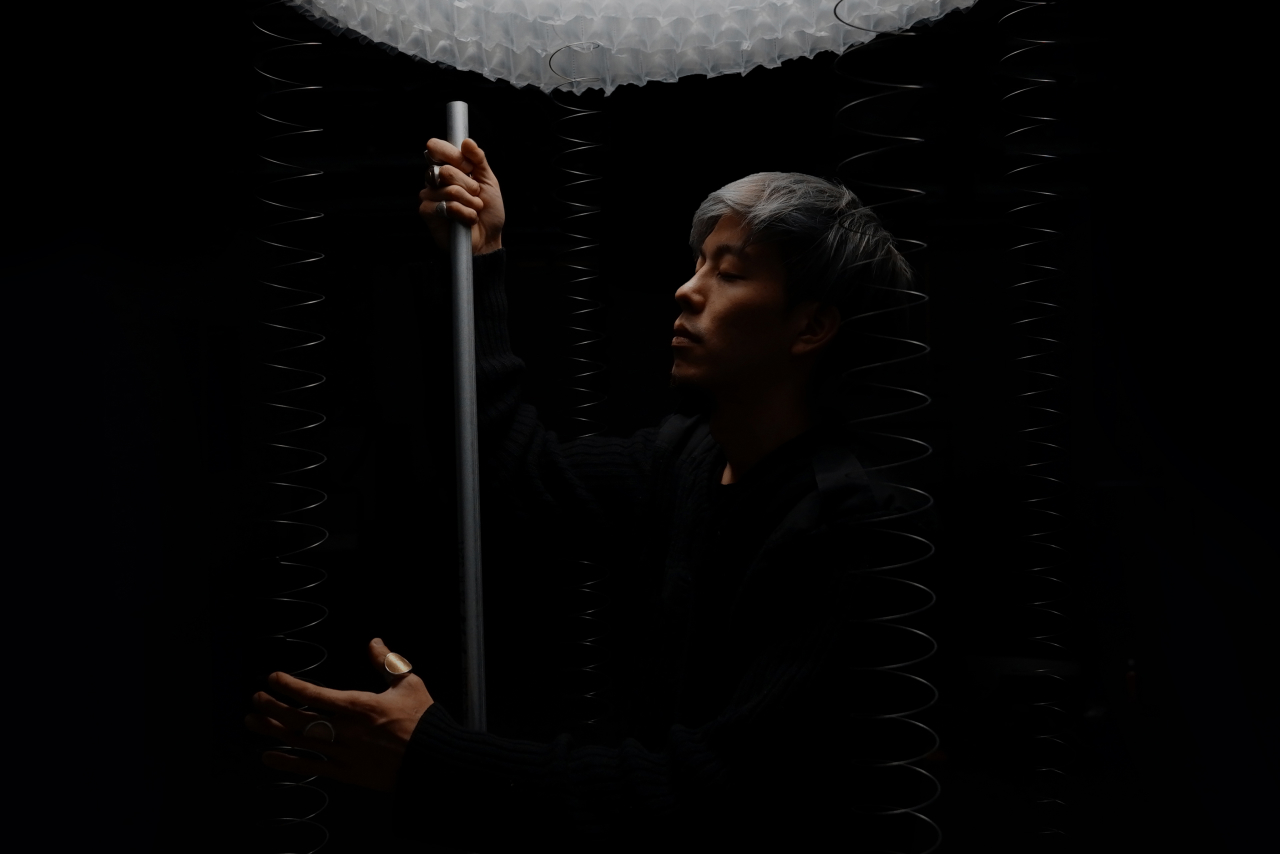
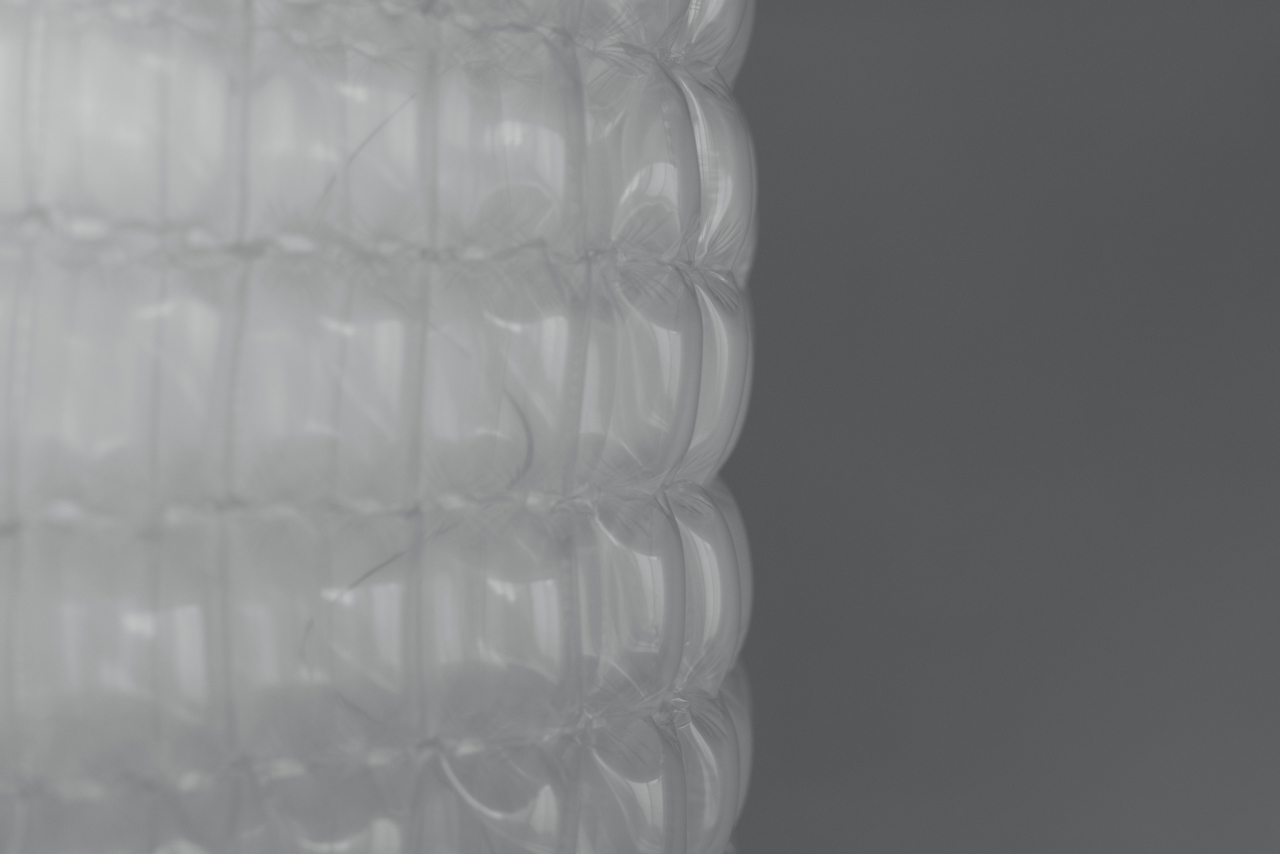
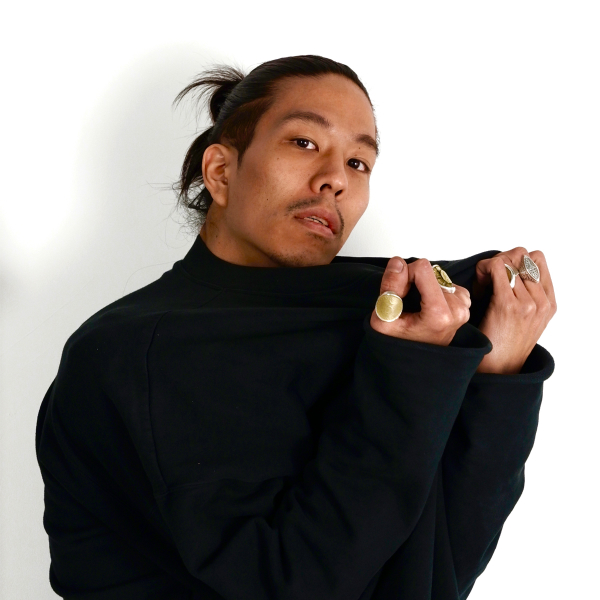
TAKUTO OHTA
Takuto Ohta was born in France in 1993. He graduated from Musashino Art University in 2017 and completed a master's degree from Tokyo University of the Arts in 2022. He re-exposes the senses that may have been lost as a result of negative effects related to the development of culture and civilization, and he expresses them in words and forms. Currently, he is focusing on the relationship between things with the keywords, "decomposition" and "production," which are the roots of life activities and manufacturing. He believes that he doesn’t need to stick to specific areas or categorize his works. He tries to think in a fluid and pluralistic way during the process.
Comité Colbert Award Exhibition, Geidai Museum, Tokyo (2019&2022) / ADF Milano Salone Exhibition, Tortona37, Italy (2020) / ‘Take Your Time’, Tongyeong Triennale, Korea (2022).
1993年フランス生まれ。2017年武蔵野美術大学工芸工業デザイン学科卒業。2022年東京藝術大学大学院美術研究科デザイン専攻修了。文化や文明の発展への反動で失われた感覚を再露出し、言葉や形で表現。 現在は、生命活動やものづくりの根源である「分解」と「生産」をキーワードに、モノとモノの関係性に注目している。コミテコルベールアワード 2019 グランプリ受賞、ADFミラノサローネデザインアワード 2021で最優秀賞。主な展示として、「Fuori Salone2021」Tortona37(Italy)、「TAKE YOUR TIME」Tong yoeng Triennale 2022(Korea)。
https://www.deco-designcomplex.com/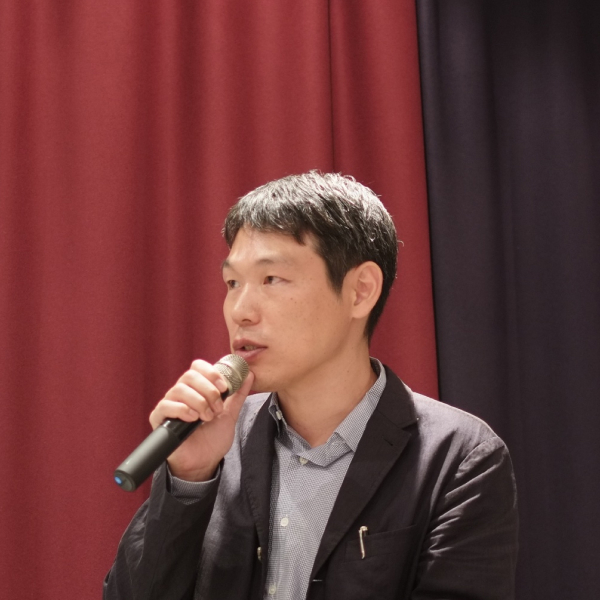
TAKAHIRO TSUCHIDA
Design journalist. Takahiro Tsuchida was born in Japan in 1970 and has been working freelance since 2001. His work focuses on diverse areas of design, from products and interiors to social systems, and he has contributed to Japanese magazines and websites such as Casa BRUTUS, Axis and Elle Decor through interviews and research in Japan and abroad. He is a part-time lecturer at Tokyo University of the Arts and Kuwasawa Design School. He is also the author of Contemporary Design Interviews (2021), in which he gives his own interpretation of the current design scene through interviews with 100 emerging designers from around the world. In 2023, he is the guest director of the exhibition "The Original" at 21_21 design sight in Tokyo.
デザインジャーナリスト、ライター。1970年、北海道生まれ。会社員を経て2001年からフリーランスで活動。国内外での取材やリサーチをもとに専門誌などに寄稿している。コンテンポラリーデザインを主なテーマとして、家具、インテリア、日用品について書くことが多い。東京藝術大学、専門学校桑沢デザイン研究所非常勤講師。 2023年、21_21 DESIGN SIGHT(東京)で企画展「The Original」の展覧会ディレクターを務める。近著『デザインの現在 コンテンポラリーデザイン・インタビューズ』(PRINT & BUILD)。
www.instagram.com/tt0/VENUE
DROPCITY
Via Sammartini 48,
20125 Milano
ARCHIVE
‘The Thinking Piece’ Exhibition26.04 - 01.05. 2022
The first exhibition was showcased at the gallery (PLACE) by method in Tokyo from 26 April - 1 May 2022. Nineteen designers including we+, TAKT PROJECT, Studio Drift, Kosuke Araki, Rikako Nagashima and Shikai Tseng, exhibited and sold their works to donate the proceeds to humanitarian aid organisations in support to Ukraine. Donations reached 2 million yen.
東京・渋谷のギャラリー(PLACE)by methodで開催したエキシビションでは、we+、TAKT PROJECT、Studio Drift、荒木宏介、長嶋りかこ、Shikai Tsengはじめ国内外から19組が参加。エディション作品を中心に展示販売を行い、収益など200万円をウクライナとその周辺国の人道支援のため寄付しました。

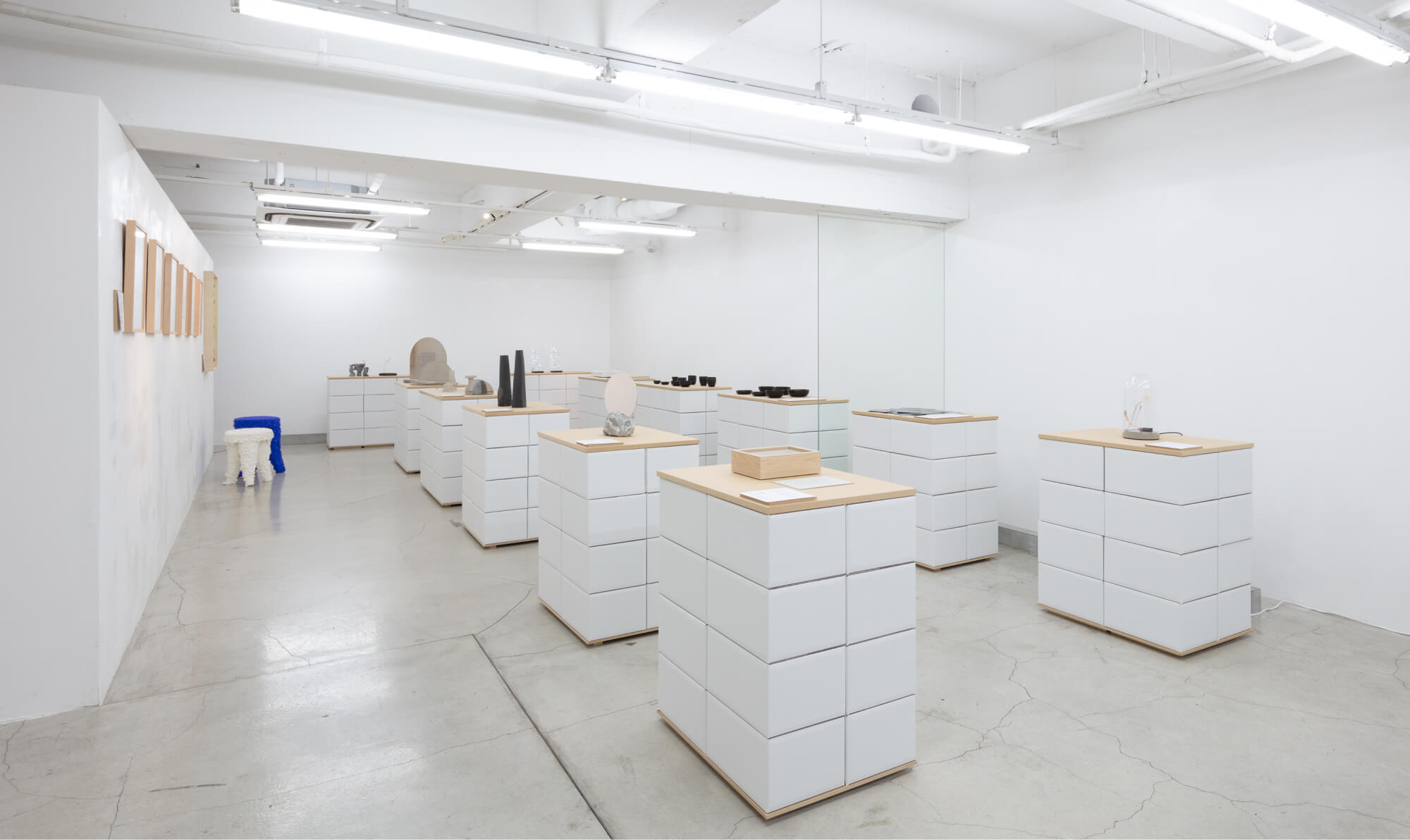
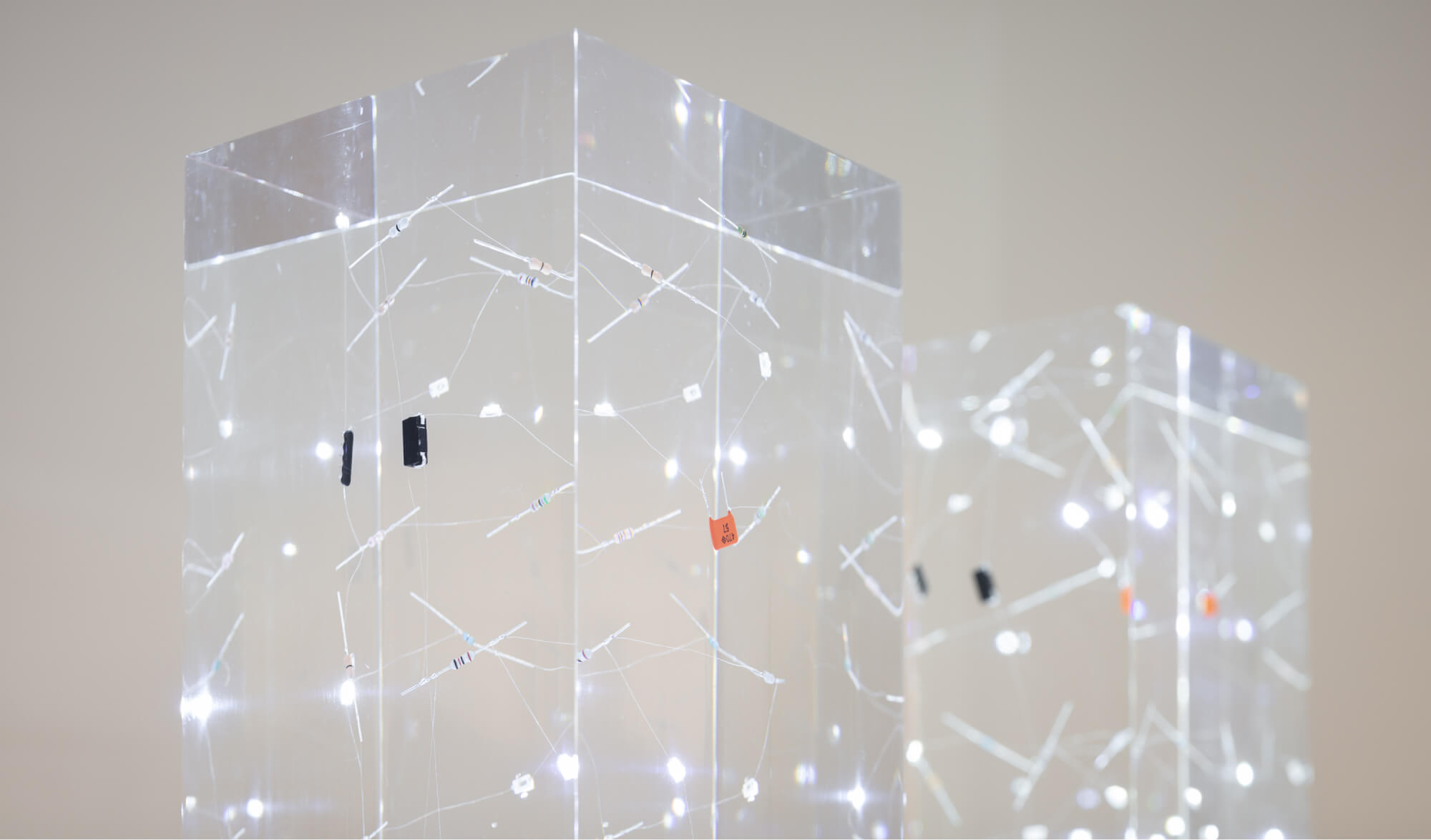
Dialogue#1 23.08.2022#2 01.10.2022
Two public talk events were held at Axis Gallery in Roppongi, Tokyo. The dialogue was led by designers who participated in "The Thinking Piece" exhibition that same year, along guests of the same generation, and engaged visitors in a discussion about the relationship between design and social issues. The event was highly impressive due to the significant level of interest in this theme.
東京・六本木のアクシスギャラリーで2回にわたり行われたトークイベント。同年の「The Thinking Piece」展の参加デザイナーを中心に同世代のゲストも参加して、デザインと社会課題の関係などについて来場者を巻き込みながら対話が進行しました。このテーマへの関心の高さを印象づけるイベントでした。
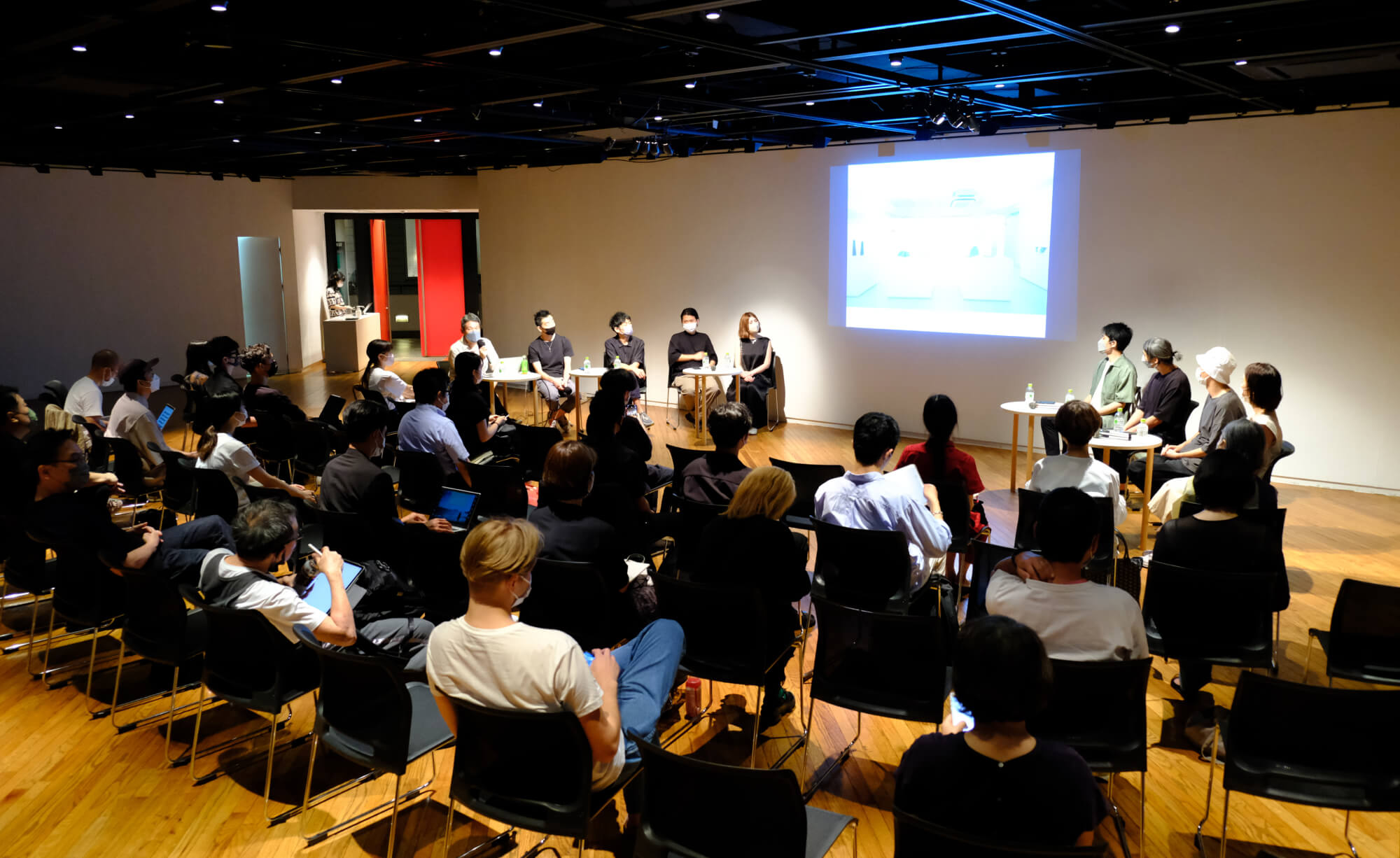
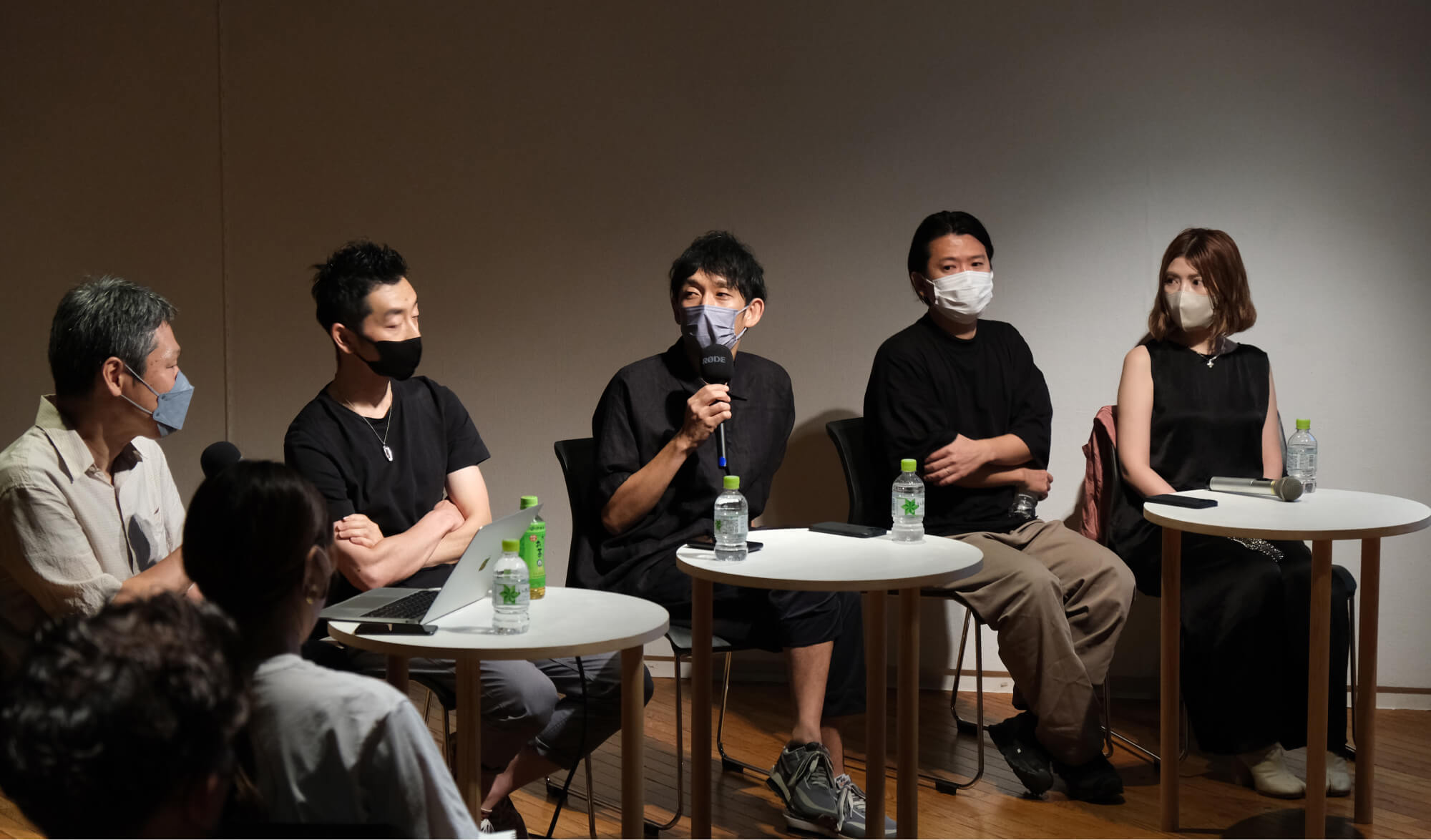
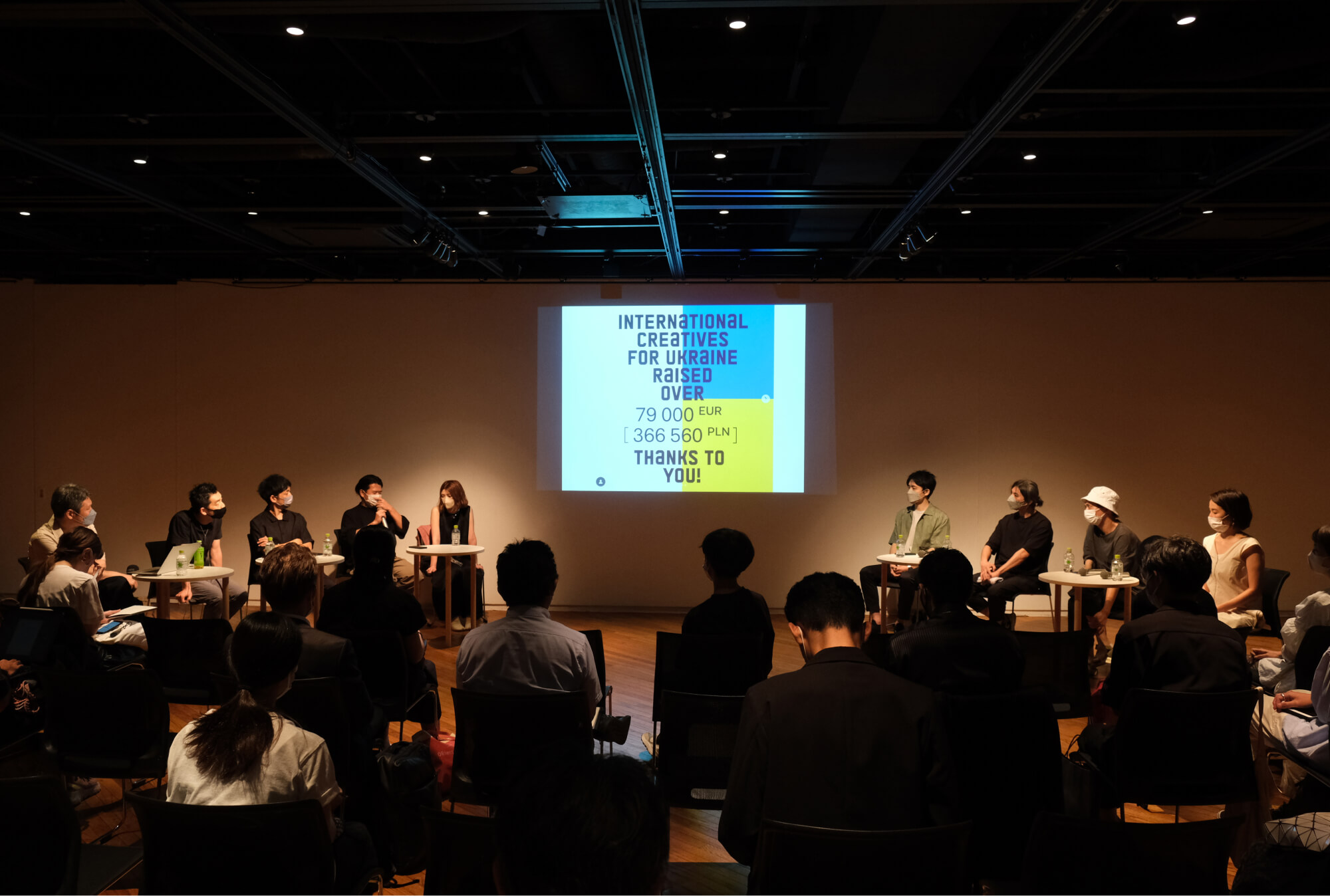
CONTRIBUTORS
The exhibition hosting team
Takahiro Tsuchida, Hokuto Ando(we+), Toshiya Hayashi(we+), Satoshi Yoshiizumi(TAKT PROJECT)
Graphic Design Junya Maejima
Coordination Yukiko Kanamori, Hiroko Goda
Special Thanks ISN Co., Ltd, HAKUTEN
展覧会企画チーム
土田貴宏、安藤北斗(we+)、林登志也(we+)、吉泉聡(TAKT PROJECT)
グラフィックデザイン 前島淳也
コーディネーション 金森裕貴子、合田紘子
協力 株式会社アイエスエヌ、HAKUTEN
